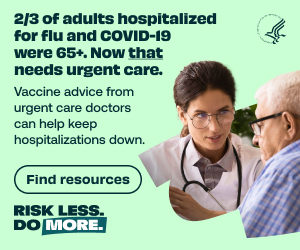Traditionally, there is often a large gap in the time between when a therapeutic intervention is proven effective and when it becomes routine clinical practice.
An excellent example: The use of thrombolytic therapy in myocardial infarctions.
Two recent studies call into question whether therapeutic hypothermia is actually effective.
Traditionally, there is often a large gap in the time between when a therapeutic intervention is proven effective and when it becomes routine clinical practice.
An excellent example: The use of thrombolytic therapy in myocardial infarctions. Dr. Sol Sherry at Temple Medical School in Philadelphia convincingly demonstrated that a streptokinase infusion could lyse clots. Unfortunately, it took a decade before thrombolysis for ST elevation myocardial infarctions became commonplace. In the meantime, thousands of patients with STEMIs who did not have access to this life-saving therapy suffered the consequences of the slow adoption of this treatment.
The narrowing of the gap between “what’s known” and “what’s practiced” is a delicate balance. In the case of thrombolytic therapy for STEMIs, there were many extraordinarily large studies that confirmed the efficacy of this treatment (the GUSTO trial had 41,021 patients, the ISIS-3 trial had 41,299 patients). To put this into perspective, the NINDS trial of TPA for strokes had 291 patients in Part I and 333 in Part 2.
When considering the early adoption of a therapeutic intervention, the fundamental analysis involves an assessment of potential benefit vs. potential harm. In the case of hypothermia treatment of comatose post-cardiac arrest patients, the benefits shown in early studies seemed to be substantial and the harm negligible. If there were something that could have been done to quickly stop the devastating neurologic consequences of cardiac arrest that was also safe and inexpensive, then early adoption would have seemed reasonable.
Hypothermia Works
The first abstract (page 18, after the jump) makes the “pro” case for the use of hypothermia and cites the two initial small trials that found positive outcomes and ‘numbers needed to treat’ of only 5-7.
Given the surprisingly small NNTs of the initial studies and the potential for little harm, the enthusiasm for the application of hypothermia for comatose survivors of cardiac arrest became widespread. Buoyed by subsequent noncontrolled studies citing benefit, implementation of cooling was rapidly adopted by many tertiary care centers.
In New York City, cooling centers were regionalized, so for eligible patients, EMS bypassed the closest hospitals and transported to these centers. Cooling was embraced eagerly because it was easy, cost nothing of consequence and was believed to have the potential to save lives and neurologic function.
Except for the two initial small studies, no randomized trials of hypothermia for ROSC have been reported – until two studies were presented at the November 17, 2013 American Heart Association meeting. Unfortunately, both concluded that hypothermia may not effect survival or neurologic outcomes.
Hypothermia May Not Work
The first was a randomized trial to determine whether prehospital cooling improves outcomes after ROSC in patients with and without ventricular fibrillation (VF). The study was based in King County, Washington, a locale that has had extraordinarily good outcomes from prehospital arrest.
Initial survivors were randomized into two groups: one group received two liters of 4°C normal saline and the other group received standard care . 583 resuscitated patients with VF and 776 without VF were randomized to the cold saline protocol or standard care. The conclusion — although the cold saline infusions lowered core temperature and reduced the time to ultimately achievement of a temperature of 34C (93.2F), it did not improve survival or neurologic status.
The stats for outcomes were typical of King County studies – remarkable. The survival to discharge in the initially resuscitated VF groups were 62.7% in the cold saline group and 64.3% in controls – truly amazing. In the non-VF groups survival was 19.2% in the cooled group vs. 16.3% in the standard care group.
Full neurologic recovery or only mild impairment was 57.5% in the VF cooled group vs. 61.9% of the controls. In the non-VF subset the numbers were 14.4% in the cooled group vs 13.4% in the controls. JAMA 2014;311(1):45-52 Kim, F., et al (published online 11/17/13).
The second trial compared outcomes in 473 patients cooled to 33C (91.4F) vs that in 466 cooled to 36C ( 96.8F, or near normal body temperature). There was no statistically significant differences in mortality at 180 days and neurologic outcomes were similar. Results in predefined subgroups were also similar (See Sidebar 2).
So, What Now?
Benjamin Abella, MD, of the University of Pennsylvania who, has run a national course every year on hypothermia, noted several remaining knowledge gaps to determine the proper “dosage” of therapy:
- Duration of post-arrest targeted temperature management
- Depth of post-arrest targeted temperature management for select patients
- Optimal injury measurement post-arrest (with the idea that patients with moderate injury [if identified]are most likely to be the ones to receive benefit from hypothermia given that the patients with mild injury will likely do well and those with severe injury will likely not)
- Pharmaceutical adjuncts to targeted temperature management
- Early vs late post-arrest cardiac cath
Dr. Abella, at the November 17th meeting of the American Heart Association is quoted as saying “I fear that if we uniformly apply 36 degrees for our patients, we may be excluding benefit for some of our patients.” The gist of his case: The implication that some yet unknown subset may benefit the patient, and that, as long as hypothermia causes no harm of consequence, it should continue to be applied to all.
In an editorial accompanying the Nielsen paper, Drs. John Rittenberger and Clifton Callaway, both of the University of Pittsburgh, noted that in the past decade, at best only 1/3 of ROSC patients would survive hospitalization, and “perhaps the most important message to take from this trial is that modern, aggressive care that include attention to temperature (i. e, avoiding hyperthermia) works, making survival more likely than death when a patient is hospitalized after CPR.”
Regarding future studies, Rittenberger and Callaway says they “can continue to refine protocols, define subgroups that benefit from individual therapies, and clarify how to best adjust temperature or other interventions to each patient’s illness.”
So, maybe it is not the temperature achieved but that a more important factor is maintaining a constant temperature and avoiding fluctuations and hyperthermia – but this is yet to be determined.
So the question is, based on these latest negative trials, what will all of the hospitals using hypothermia do going forward? Continue with the assertion that something associated with hypothermia treatment works — the temperature achieved, the constancy of temperature, the prevention of hyperthermia, the identification of a subset of patients who benefit – or will they stop the practice?
The bottom line: Despite the latest negative results, it seems that being an early adopter of hypothermia was reasonable given the high stakes – lowering mortality and decreasing neurologic morbidity in the setting of little potential harm. But, now that we know more, the question is where do we go from here — continue using hypothermia in the belief that there is a yet unidentified subset that benefits, or discontinue the practice.
Your thoughts are welcomed.
1: DOES THE EVIDENCE SUPPORT THE USE OF MILD HYPOTHERMIA AFTER CARDIAC ARREST? YES
Nolan, J.P., et al, Br Med J 343:d5830, September 23, 2011
These British authors support therapeutic hypothermia for comatose survivors of cardiac arrest. In the “Hypothermia after Cardiac Arrest” (HACA) study published in 2002, sedation and surface cooling of unconscious patients resuscitated from prehospital ventricular fibrillation (VF) cardiac arrest was associated with an increased likelihood of a favorable neurologic outcome at six months (55% vs. 39% of uncooled controls) and lower six-month mortality (41% vs. 55%) at reasonable numbers-needed-to-treat (NNT) (6 and 7, respectively). In a subsequent smaller study, good neurologic outcome at hospital discharge was reported in 49% of the hypothermia group compared with 26% of a normothermic group (NNT 4.5); differences in mortality did not achieve statistical significance (51% vs. 68%). Based on these studies and other human and animal data, in 2003 the International Liaison Committee on Resuscitation (ILCOR) recommended cooling to 32-34C (89.6-93.2) for 12-24 hours for unconscious adults resuscitated from prehospital VF arrest. ILCOR added that although data are insufficient, hypothermia might be beneficial for other arrest situations. The authors of this commentary note that additional studies have provided supportive data, citing a 20% relative reduction in inpatient mortality with mild hypothermia in a Dutch study of more than 5,000 patients with variable cardiac arrest circumstances. Despite some uncertainties about the procedure (optimal cooling method, temperature, rewarming protocols and therapeutic window) and methodologic limitations of available studies, the authors feel that there is sufficient evidence to support mild hypothermia after prehospital VF arrest, particularly when combined with a comprehensive program of post-arrest care. Although the evidence for other arrest situations is less robust, they state that the harms of this intervention are limited.
15 references (jerry.nolan@nhs.net – no reprints).
Copyright 2012 by Emergency Medical Abstracts – All Rights Reserved 4/12 – #5
2: TARGETED TEMPERATURE MANAGEMENT AT 33C VERSUS 36C AFTER CARDIAC ARREST
Nielsen, N., et al, N Engl J Med 369(23):2197, December 5, 2013
BACKGROUND: Therapeutic hypothermia has been recommended for comatose survivors of cardiac arrest, based on positive results of two small trials.
METHODS: In this multinational study, 950 adults who were comatose after resuscitation from prehospital arrest of presumed cardiac origin (regardless of initial arrest rhythm, shockable or nonshockable), and were admitted to one of 36 ICUs in Europe and Australia, were randomized to therapeutic hypothermia to a target temperature of either 33C (91.4F) or 36C (96.8F). Gradual rewarming was initiated after 28 hours, and fever control measures were implemented to maintain the temperature of unconscious patients below 37.5C (99.5F) until 72 hours post-arrest.
RESULTS: The mean duration of follow-up was 256 days. There were no statistical differences between the groups in baseline characteristics or in withdrawal of life-sustaining therapy during the first seven days after admission. There were no differences between the groups in the primary outcome, death upon completion of the study (50% in the 33C (91.4F) group and 48% in the 36C (96.8) group, hazard ratio [HR] in the former group 1.06). Similarly, there was no intergroup difference in rates of poor neurologic function (risk ratio [RR] for a CPC of 3-5 in the 33C group 1.02, RR for a modified Rankin scale score of 4-6 1.01), or in the composite outcome of death or a poor neurologic outcome (relative risk in the 33C group, 1.04). Rates of the occurrence of one or more serious adverse events were 93% in the 33C (91.4F) group and 90% in the 36C (96.8F) group.
CONCLUSIONS: In this large randomized trial, there was no benefit achieved by cooling patients to a target temperature of 33C (91.4F) compared with a target near-normal temperature of 36C (96.8F) in comatose survivors of prehospital cardiac arrest. 39 references (niklas.nielsen@med.lu.se for reprints)
Copyright 2014 by Emergency Medical Abstracts – All Rights Reserved 1/14 – #2









5 Comments
Reminds me of high dose epi in cardiac arrest.
It’s amazing how much money continues to be wasted, even at my facility, on a treatment (therapeutic hypothermia) that isn’t proven to work. Many of our “higher-ups” have invested a lot of time and dollars into TH and likely won’t give up without a fight. They will wait for more studies to refute the intervention. I’m all for another study focused on the benefits of euthermia, but I’m just a lowly drone ED physician.
With these 2 most recent studies it seems clear to me, the extra work and resources needed to cool the body 2-4 degrees C, is not worth it. I have stopped this practice.
Very similar to TXA being widely adopted in trauma based on poor quality studies.
When the right conditions are present: strong need for improvement, cheap intervention, initial studies look promising, downsides… adoption is often fast and widespread.
As in many therapies, the pendulum swings back, but let’s be careful not to swing too much to the other side saying that hypothermia is futile. Maybe not all benefit and a selected few might. We don’t know that yet. But what I get from these studies is to avoid hyperthermia and being aggressive about maintaining normothermia.